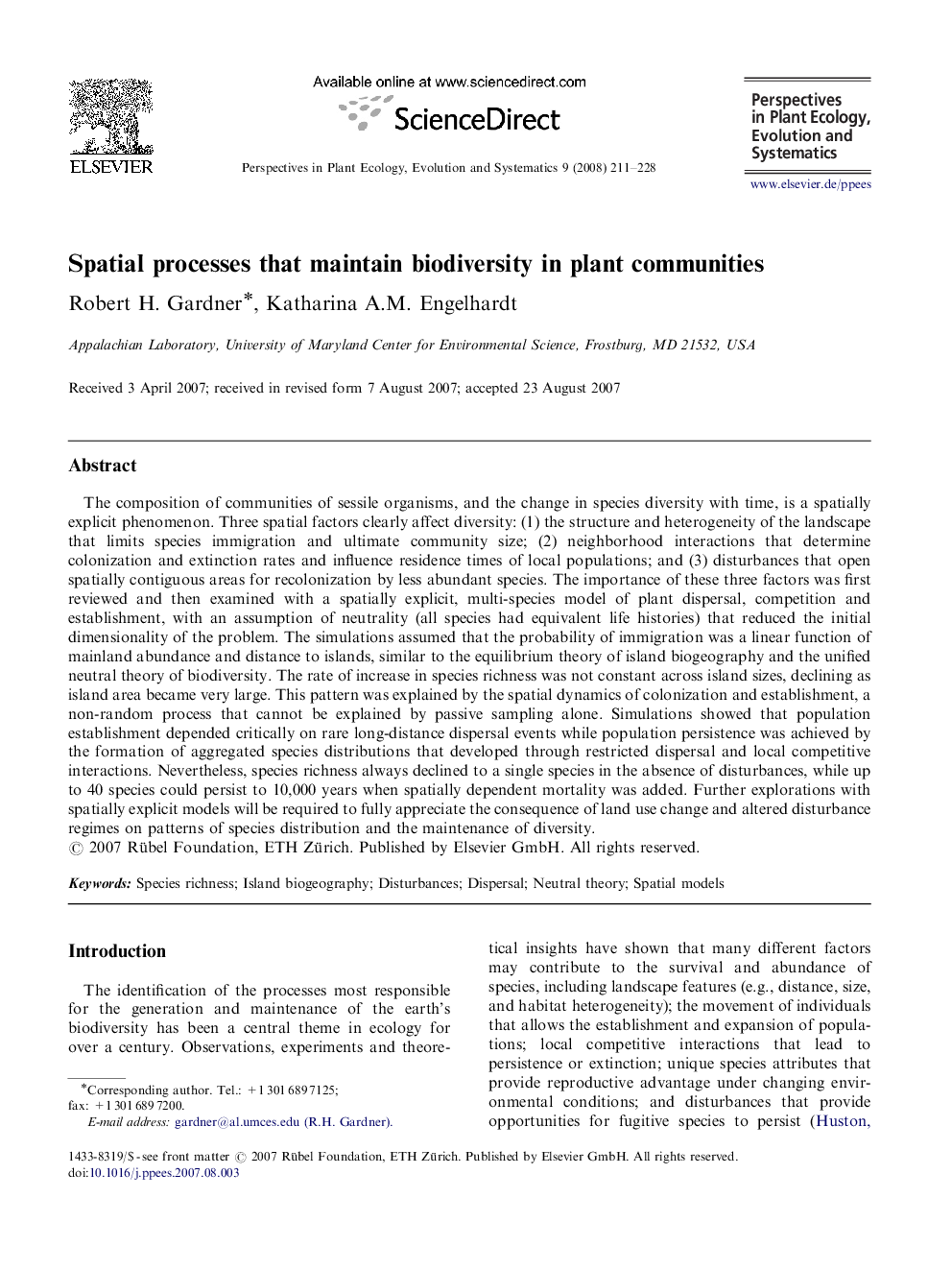| کد مقاله | کد نشریه | سال انتشار | مقاله انگلیسی | نسخه تمام متن |
|---|---|---|---|---|
| 4401266 | 1618604 | 2008 | 18 صفحه PDF | دانلود رایگان |
عنوان انگلیسی مقاله ISI
Spatial processes that maintain biodiversity in plant communities
دانلود مقاله + سفارش ترجمه
دانلود مقاله ISI انگلیسی
رایگان برای ایرانیان
کلمات کلیدی
موضوعات مرتبط
علوم زیستی و بیوفناوری
علوم کشاورزی و بیولوژیک
بوم شناسی، تکامل، رفتار و سامانه شناسی
پیش نمایش صفحه اول مقاله

چکیده انگلیسی
The composition of communities of sessile organisms, and the change in species diversity with time, is a spatially explicit phenomenon. Three spatial factors clearly affect diversity: (1) the structure and heterogeneity of the landscape that limits species immigration and ultimate community size; (2) neighborhood interactions that determine colonization and extinction rates and influence residence times of local populations; and (3) disturbances that open spatially contiguous areas for recolonization by less abundant species. The importance of these three factors was first reviewed and then examined with a spatially explicit, multi-species model of plant dispersal, competition and establishment, with an assumption of neutrality (all species had equivalent life histories) that reduced the initial dimensionality of the problem. The simulations assumed that the probability of immigration was a linear function of mainland abundance and distance to islands, similar to the equilibrium theory of island biogeography and the unified neutral theory of biodiversity. The rate of increase in species richness was not constant across island sizes, declining as island area became very large. This pattern was explained by the spatial dynamics of colonization and establishment, a non-random process that cannot be explained by passive sampling alone. Simulations showed that population establishment depended critically on rare long-distance dispersal events while population persistence was achieved by the formation of aggregated species distributions that developed through restricted dispersal and local competitive interactions. Nevertheless, species richness always declined to a single species in the absence of disturbances, while up to 40 species could persist to 10,000 years when spatially dependent mortality was added. Further explorations with spatially explicit models will be required to fully appreciate the consequence of land use change and altered disturbance regimes on patterns of species distribution and the maintenance of diversity.
ناشر
Database: Elsevier - ScienceDirect (ساینس دایرکت)
Journal: Perspectives in Plant Ecology, Evolution and Systematics - Volume 9, Issues 3â4, 6 March 2008, Pages 211-228
Journal: Perspectives in Plant Ecology, Evolution and Systematics - Volume 9, Issues 3â4, 6 March 2008, Pages 211-228
نویسندگان
Robert H. Gardner, Katharina A.M. Engelhardt,